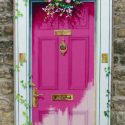The weather prevents me from being there physically, but this is a transcript of my remarks for “Varieties of Digital Humanities,” MLA, Jan 5, 2018.
Using numbers to understand cultural history is often called “cultural analytics”—or sometimes, if we’re talking about literary history in particular, “distant reading.” The practice is older than either name: sociologists, linguists, and adventurous critics like Janice Radway have been using quantitative methods for a long time. But over the last twenty years, numbers have begun to have a broader impact on literary study, because we’ve learned to use them in a wider range of ways. We no longer just count things that happen to be easily counted (individual words, for instance, or books sold). Instead scholars can start with literary questions that really interest readers, and find ways to model them.
Read full post here.

